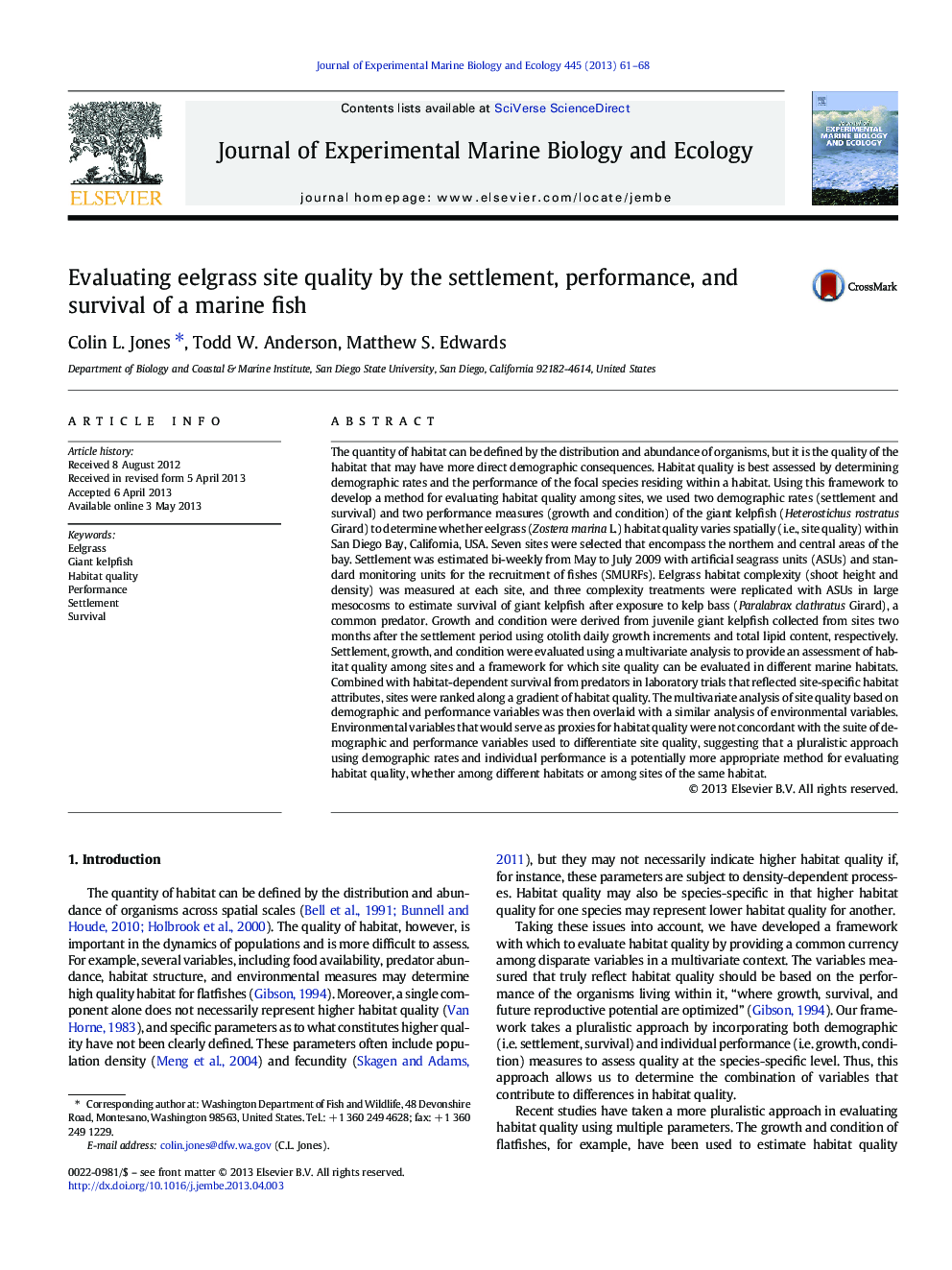| Article ID | Journal | Published Year | Pages | File Type |
|---|---|---|---|---|
| 4395628 | Journal of Experimental Marine Biology and Ecology | 2013 | 8 Pages |
•A framework was developed to evaluate habitat quality spatially.•Demographic rates and performance of giant kelpfish were measured among sites.•Eelgrass site quality varied within a coastal embayment.•Environmental variables were not consistent with demographic rates and performance.•It is important to use a pluralistic approach to assess habitat quality
The quantity of habitat can be defined by the distribution and abundance of organisms, but it is the quality of the habitat that may have more direct demographic consequences. Habitat quality is best assessed by determining demographic rates and the performance of the focal species residing within a habitat. Using this framework to develop a method for evaluating habitat quality among sites, we used two demographic rates (settlement and survival) and two performance measures (growth and condition) of the giant kelpfish (Heterostichus rostratus Girard) to determine whether eelgrass (Zostera marina L.) habitat quality varies spatially (i.e., site quality) within San Diego Bay, California, USA. Seven sites were selected that encompass the northern and central areas of the bay. Settlement was estimated bi-weekly from May to July 2009 with artificial seagrass units (ASUs) and standard monitoring units for the recruitment of fishes (SMURFs). Eelgrass habitat complexity (shoot height and density) was measured at each site, and three complexity treatments were replicated with ASUs in large mesocosms to estimate survival of giant kelpfish after exposure to kelp bass (Paralabrax clathratus Girard), a common predator. Growth and condition were derived from juvenile giant kelpfish collected from sites two months after the settlement period using otolith daily growth increments and total lipid content, respectively. Settlement, growth, and condition were evaluated using a multivariate analysis to provide an assessment of habitat quality among sites and a framework for which site quality can be evaluated in different marine habitats. Combined with habitat-dependent survival from predators in laboratory trials that reflected site-specific habitat attributes, sites were ranked along a gradient of habitat quality. The multivariate analysis of site quality based on demographic and performance variables was then overlaid with a similar analysis of environmental variables. Environmental variables that would serve as proxies for habitat quality were not concordant with the suite of demographic and performance variables used to differentiate site quality, suggesting that a pluralistic approach using demographic rates and individual performance is a potentially more appropriate method for evaluating habitat quality, whether among different habitats or among sites of the same habitat.
